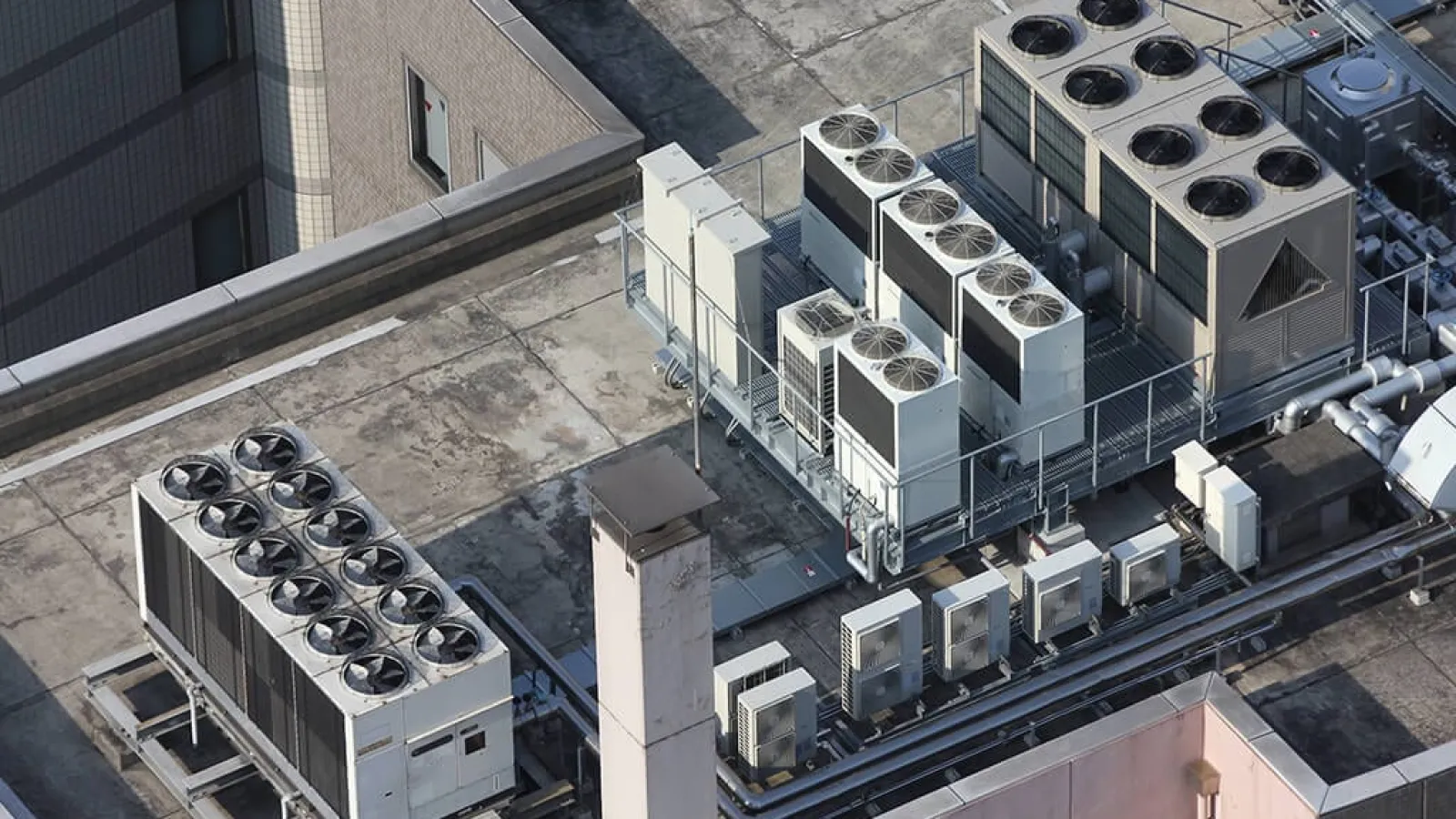Technology continues to evolve, including in the field of building automation systems and commercial HVAC. If you’re unfamiliar, a Building Automation System, or BAS, refers to a control system which monitors and controls building systems.
In this blog from Estes Commercial, we’ll review the basics of building automation systems, how a BAS works and the benefits, especially for commercial HVAC applications.
Review: Building Automation Systems Basics
The primary goal of a BAS is to run systems as efficiently as possible with a reduction in maintenance and repairs paired with energy savings.
Systems You Can Control with Building Automation
- Heating and cooling
- Mechanicals
- Flood and fire safety
- Surveillance and safety
- Ventilation
- Indoor air quality
- Humidity controls
- Plumbing and water use
- Security and
- Indoor/outdoor lighting
Uses of Building Automation Systems
Improve air quality
Optimize ventilation and improve the air employees and customers breathe. Fresh air regulates comfort and is especially important during extreme temperatures and in some industrial sites.
Some production facilities, for example, off-gas high concentrations of airborne chemicals or odors. A better balance creates a healthier work environment and happier employees.
Zone Control
Building automation provides the ability to dictate different heating and cooling requirements for different rooms or areas of the building.
For example, if you maintain significant IT servers, the server room needs additional air conditioning. Likewise, certain staging sites or areas of a production line need specific heating and cooling.
Monitor Systems
You may have installed a motion-sensor outlet in your pantry because someone was always leaving the light on. Imagine this on a grander scale when it comes to your indoor and outdoor lighting in a commercial facility. Automation also controls security cameras and monitors entrances for personnel entrance and exits.
Stay on Top of Mechanical Performance
BAS, similar to a smart thermostat, “learns” routines after initial programming. Building automation systems eventually understand what constitutes normal use and notifies you to anomalies. If your BAS catches a spike in operation or energy use, for instance, it tells you or the appropriate personnel.
This information helps catch minor issues before they become time-consuming and expensive. If you have a production facility, “downtime,” is something to avoid. Building automation systems alert you before mechanical issues threaten your productivity.
How Building Automation Systems Work
In a BAS, the main component is known as the “controller.” This is a specialized computer which catalogs all the programmed instructions and “learning.” Using various sensors, for example, it may detect when rooms are occupied and when they are not and adapt systems accordingly.
This is commonly referred to as a “smart building” feature. Essentially, building automation systems depend on five components:
- A user interface which receives data from system monitors and personnel input.
- A communications protocol to dictate information between sensors and controllers.
- Sensors to measure and retain data such as CO2 output, humidity, occupancy, daylight, temperature and air quality.
- The “brain,” or controller. It transfers all the data and commands.
- Controls, or output devices, which execute the commands from the controller.
Benefits of Building Automation Systems
Save Energy; Save Money
According to the U.S. Energy Information Association (EIA), approximately 40 percent of total U.S. energy consumption came from commercial and residential buildings. Of the 40 percent, the biggest consumers of energy were commercial building HVAC systems.
Combined with electricity use for lighting and equipment, building automation systems are known to produce energy savings as much as five to 15 percent annually. Less energy consumption also reduces greenhouse emissions.
More Data Means More Control
The more information your BAS collects, the more likely you avert catastrophes. Your automation system detects system failures and reports it and, as applicable, shuts down the system.
If you have a gas furnace, for example, the flame sensor shuts the gas valve if it doesn’t detect a flame. Building automation systems provide the same peace of mind on a much larger scale.
Reduce Repairs, Increase Equipment Lifespan
The collection of information, as well as the intentional use of equipment, adds up to fewer repairs over the years. When the system is optimized, it runs efficiently and suffers less wear and tear.
Greater Productivity from Comfortable Employees
Cut down on sick days and the loss of productivity from an uncomfortable workspace and “sick building syndrome.” With a BAS for commercial heating, air conditioning and ventilation, occupants breathe cleaner air.
With purification products, less virus and bacteria circulate in the building. Healthy air and comfortable temperatures boost focus and accuracy as well.
Conclusion: Reduce Expenses with Building Automation Systems from Estes Commercial
Join the building automation systems revolution when you pair it with your commercial HVAC, lighting, safety and security systems. You’ll love the control it provides along with the overall expense reductions. BAS is better for the environment, simplifies building operation and alerts you before small problems spiral out of control.
With BAS, Estes Commercial helps businesses protect their workflow, employees and equipment. Contact us today to learn more about building automation systems for your facility, business or commercial property.


